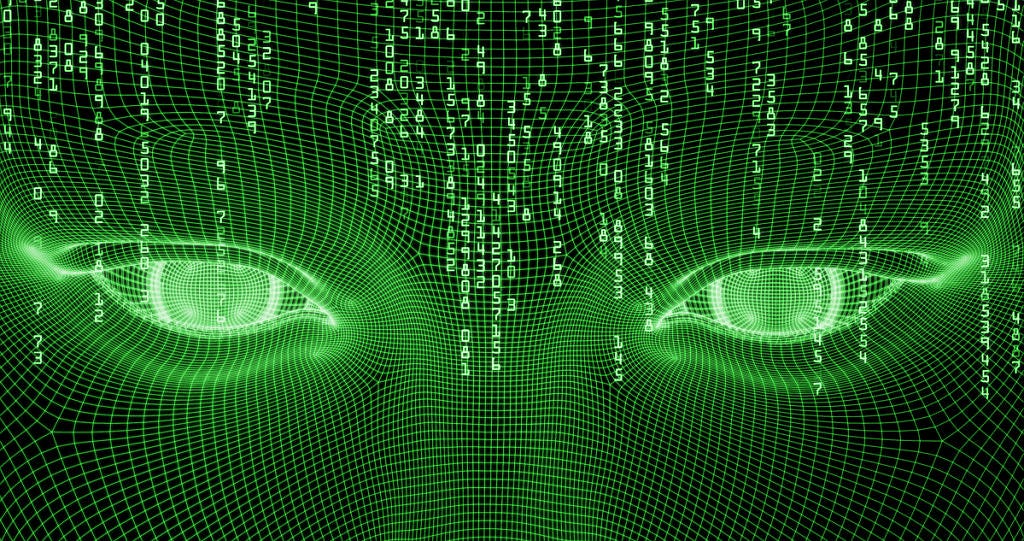Latest news about Bitcoin and all cryptocurrencies. Your daily crypto news habit.
 Words have a genealogy and it’s easier to trace the evolution of a single word than the evolution of a language. — Daniel C. Dennett
Words have a genealogy and it’s easier to trace the evolution of a single word than the evolution of a language. — Daniel C. Dennett
The blockchain ecosystem is rapidly growing and becoming more complex every day. There are more than 1,541 different cryptocurrencies currently¹ on the market, and numbers have been steadily increasing with 157 new ones added since January 7th of 2018.
This abstract crypto-web is already facing several problems. Most notably are the development barriers for entry, incompatible blockchain environments, and integration into the real world. iOlite, a new blockchain technology, is helping to solve these three issues in very advanced ways.
The platform is creating a bridge between natural and programming languages, through its unique Fast Adaptation Engine (FAE) design — using lambda DCS and HCI research at Stanford University. People will be able to convert any formal computing and spoken language, such as English, into any desired programming or natural languages. This would be a massive accomplishment for human-machine interaction, as well as a modular computational solution that will bootstrap blockchain adoption. This is already appearing quite industry-changing, but the deeper implications will reveal to be much more profound.
The Tip of the Iceberg
At the surface, iOlite is engineering translations for natural languages to Solidity (a programming language for Ethereum). This will open the gates for people and businesses to independently design & implement smart contracts in their companies, professions, or personal lives; in a naturally understandable way.
Smart contracts are simply an evolved digital medium for regular contracts. Being on a blockchain allows for new, useful qualities in a contract, through a publicly-verifiable, inalterable chain of chronological signed events. Ethereum has the added utility of its virtual machine, which allows programmability on top of its blockchain. This is how smart contracts have leverage over their traditional predecessors — they can be automated, autonomous, and freely audited. They can replace intermediary actors and services, while formally guaranteeing outcomes and executions by specification. Not only does this significantly reduce operational costs, it also makes infrastructure more efficient; and best of all, smart contracts are immune to coercion and corruption. So naturally, iOlite will initially piggyback on its own Ethereum-forked blockchain, taking advantage of these existing mechanisms.
Two of many benefiting sectors that instantly come to mind are law and insurance.
Don’t slip on the way down… Unless you’re insured
A core tenet of insurance is the principle of utmost good faith. This legal doctrine declares that both parties in a contract of insurance have a duty to communicate honest and factually-complete information, especially pertaining to conditions outlined by a broker’s policies. The definition is inherently weak, because it hinges on faith, a notion which is highly exploitable.
The current approach to circumvent the uncertainty of faith is through legal accountability. Most of us know that this is not an ideal solution. Fraudulent insurance claims steal over $80 billion annually.
Smart contracts necessitate honesty and facts. Inherently, they will only function based on discrete inputs and outputs that engaging parties agree on.
“Faith” is no longer required.
To illustrate this superior doctrine, first consider a seemingly mundane transaction that every insured entity participates in: After an underwriter analyzes and approves an insurance policy, a client makes the calculated payment and receives the legal paper proving their policy by mail.
At the insurance company where my mother works, an agent was perpetrating fraud through the sale of fake proof-of-insurance documents. If this process was automated in a smart contract, the mediating role of this corrupt agent would be pointless. A smart contract could be designed so that when a client makes her payment, the documentation is automatically and instantly transmitted to her through electronic mediums, e.g. the company’s mobile app — with a public-key ID to authenticate against their database.
A lot of similar businesses are lagging far behind when it comes to integrating new technology. Industry software can be quite incomplete and costly, and requires that everyone using it must learn a new system. Paper mail is delivered slowly, becomes quite tedious, has additional time waste & financial expenses, and is insecure.
Part of the reason technological adoption is sluggish for insurance companies as a whole, is due to the difficult assimilation of data — rampant with legal jargon — into formalized, computationally-flexible and complete solutions. The rewards of digital integration are contingent on so many technical, financial, and time demands, that it is much safer and consistent to keep things the way they are — in fact, it may be preferable to subtly dismiss it altogether.
One last deep breath
We should now circle back to iOlite to realize its imminent use potential. Because of the FAE’s interdisciplinary interpretive power to translate natural language into a smart contract, developing virtualized operations & infrastructure is no longer an obstacle. Everyone in a company will be able to contribute their existing expertise, in vocabularies they understand.
The supplementary resources available to users only adds to this efficiency — iOlite is a platform with a broader scope than just translation. It also facilitates a marketplace where completed smart contracts can be bought and sold, effectively providing an outsourcing of intellectual-labor. Other services such as security auditing of a smart contract and custom-made expressions for niche/optimized use are also available. All of this data is stored on its blockchain. By virtue of these combined features, iOlite innately curates a community of developers, researchers, industry professionals, freelancers, academics, businesses, and average users.
But remember, this is only how we see it from the surface.
Zooming out to observe iOlite as a larger macro-system we see: a decentralized, market-driven ecology with demand for language-constructed solutions-development, fueled by a community of all sophistication levels. Pack that up, inject it in a VM-powered blockchain, and what do we find? The infancy of a universal-translator, beginning as a securely distributed data-store for knowledge².
This conceptual scaffolding is helpful to further address and explore the two other problems mentioned, which iOlite helps resolve.
Goggles on? Let’s dive in
The major drawbacks of self-isolating blockchains stem from a coupled deficiency: cross-chain connectivity + cross-chain interoperability. Chain Link is helping solve the former, providing a secure digital nervous system for data feeds between blockchains and off-chain resources (such as IIoT data). This is an excellent springboard for iOlite, which delivers the interoperability power through translations (equally important, if not more). When the two are married, the resulting medium is much like an aether (vastly more true to the etymology than Ethereum). That is to say, a seamless programmable communication protocol for every device or machine, virtual and physical.
So let’s begin with an industrial perspective. Returning to the untapped domain of insurance, we can outline some of many new and interesting applications:
- Live DNA interpretation for dynamically-calculated premiums.
Genomics-technology companies could one day provide personal devices and services for real-time analysis of gene sequences. Chain Link would transmit this off-chain bioinformation to iOlite, where a FAE architecture could naturalize the data into English for user-comprehension, and simultaneously translate-then-feed Solidity-coded metrics into a smart contract that modulates different policy premiums, according to conditional weightings and the relevance of an insured’s health.
- IoT as risk monitoring and claim-verification tools.
Many new internet-connected technologies such as home automation provide useful information from real events. A smart lock could provide indisputable evidence, for example, that while an insured was working overtime, her dog’s cage was unlocked during the same time a neighbour was bitten by him. If the owner tried filing a claim for liability coverage, there might be a clause in a smart contract policy which explicitly denies a claim for harm caused by animals when their containment is not secure.
The insurance provider could have an online claim filing interface which integrates iOlite FAE modules. By analyzing the semantics in the insured’s submission, even the ambiguity of a word like “dog” could alone trigger the smart contract to status-check any connected devices associated with it, such as the smart lock on its cage. This could reduce fraud significantly, by improving on the insured’s obligation for reasonable care (or inversely, by accurately measuring negligence).
Shifting the focal point away from industry is where science-fiction becomes reality.
Navigating the Depths in a Sea of Information
We are going deep. So turn back now if you can’t survive the pressure.
 Looking at ourselves from the computer viewpoint, we cannot avoid seeing that natural language is our most important ‘programming language.’ This means that a vast portion of our knowledge and activity is, for us, best communicated and understood in our natural language…. One could say that natural language was our first great original artifact and, since, as we increasingly realize, languages are machines, so natural language, with our brains to run it, was our primal invention of the universal computer. One could say this except for the sneaking suspicion that language isn’t something we invented but something we became, not something we constructed but something in which we created, and recreated, ourselves. — Justin Leiber
Looking at ourselves from the computer viewpoint, we cannot avoid seeing that natural language is our most important ‘programming language.’ This means that a vast portion of our knowledge and activity is, for us, best communicated and understood in our natural language…. One could say that natural language was our first great original artifact and, since, as we increasingly realize, languages are machines, so natural language, with our brains to run it, was our primal invention of the universal computer. One could say this except for the sneaking suspicion that language isn’t something we invented but something we became, not something we constructed but something in which we created, and recreated, ourselves. — Justin Leiber
For quite some time, it has been no longer meaningful to try and argue that our minds are some kind of tabula rasa in their entirety. On the contrary, the mystery of consciousness seems to be slowly unraveling as a collection of interacting virtual machines. Natural language certainly plays a crucial role in this, giving us a markedly increased range of imagination, versatility, and self control.³ Additionally, “…once we have language — a bountiful kit of mind-tools — we can use them in the structure of deliberate, foresightful generate-and-test known as science.”⁴
Different than standard functional definitions in most programming languages, iOlite’s FAE definitions (structures) are not declarative arguments. The FAE has to learn to semantically identify arguments from concrete values entered by the user, in order to create a parsable generalization. A fascinating capability of this is that natural language utterances needn’t be in a grammar-strict sequential order. Contributors incrementally and interactively help the FAE to learn languages they decide, by pruning incorrect interpretations and accepting correct ones. The neurognostic likeness of a human brain is replicated by the FAE’s core language which users are bound to initially. While this is an unavoidable bedrock for the early adopters, newcomers will be able to take advantage of progress already made.
The mathematics underlying FAE’s linguistic marvels ushers in even more surprisingly human-like capacities. An imported structuring of discourse representation theory allows machines “…a mental representation built up by the hearer as the discourse unfolds.” Then putting the cherry on top, similarly integrated is relevance theory, where “…by the act of making an utterance, the speaker is conveying that what they have said is worth listening to, i.e. it will provide “cognitive effects” worthy of the processing effort required to find the meaning.”
Whilst these characteristics are certainly impacting individually, in fusion they illuminate a unique characteristic… what we have is something much different than AI or machine learning, it is better describable as a crucial precursor — a missing link — machine training (i.e. learning to learn).
The question of whether machines can think is about as relevant as the question of whether submarines can swim. — Edsger W. Dijkstra
All this has been building up to the final conclusions which iOlite could author, whether its developers realize these or not. The practopoetic hierarchy of the FAE provides working experimentation and research capacity which could theoretically prove or disprove that a non-biological system can have a mind, given that it contains the same functional constituents.
If proven, iOlite would be one of the most important inventions of all time, close to language itself. It would establish first contact with a sentient machine. The birth of artificial general intelligence (AGI). The path to machine genomes. The sublime form of human-computer interaction.
…AGI may require machines to create their own algorithms i.e., machines that learn to learn… machines are not left alone to figure out on their own the necessary algorithms, but they are heavily guided through human feedback…[which] comes in a form of everyday interactions but also in a form of scientific knowledge about development of species and individuals. Information obtained from humans is integrated through a computational process that corresponds to the biological function of sleep and dreams… AGI created that way has no danger of going rogue. It is completely safe while maximally benefiting humanity. — Danko Nikolic
Fittingly, I will let Leiber have the last words, again:
…language isn’t something we invented but something we became, not something we constructed but something in which we created, and recreated, ourselves. If nothing else, iOlite may guide us over the bridge, from human to machine.
If nothing else, iOlite may guide us over the bridge, from human to machine.
¹ As of March 7th 2018.² “…digitally coded information that can act as a constructor and has resiliency — the capacity, once it is instantiated in physical systems, to remain so instantiated.” — Chiara Marletto³ Consciousness Explained — Daniel C. Dennett. Illustrated. 511 pp. Boston: Little, Brown & Company⁴ The Role of Language in Intelligence — Daniel C. Dennet, in What is Intelligence?, The Darwin College Lectures, ed. Jean Khalfa, Cambridge, Cambridge Univ. Press. 1994
Bridging the Gaps Between Humans and Machines was originally published in Hacker Noon on Medium, where people are continuing the conversation by highlighting and responding to this story.
Disclaimer
The views and opinions expressed in this article are solely those of the authors and do not reflect the views of Bitcoin Insider. Every investment and trading move involves risk - this is especially true for cryptocurrencies given their volatility. We strongly advise our readers to conduct their own research when making a decision.